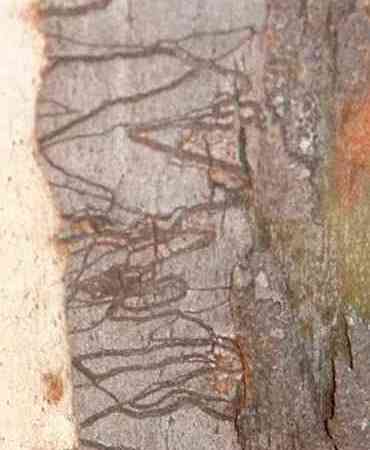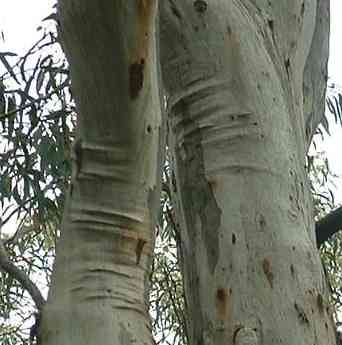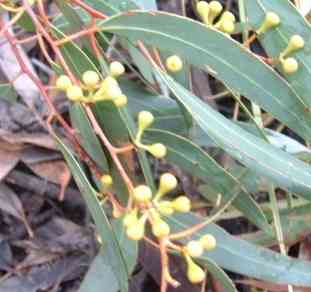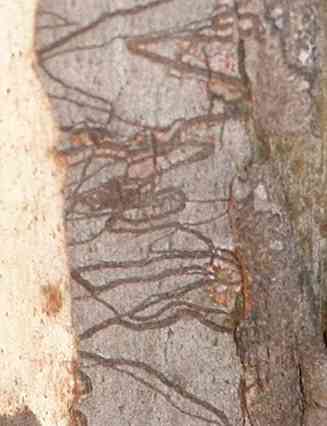Who left this scribble on the tree?

Eucalyptus rossii is commonly known as "Scribbly Gum"
(but beware! there are at least three other NSW eucalypt species locally known
as Scribbly Gum).
The story of the scribbles, caused by the larvae of the moth Ogmograptis
scribula, follows.

One good easy distinguishing character of E. rossii is the prevalence
of 'pressure wrinkles' on the trunk below the major branches.

E. rossii is a tree of dry hillslopes, and is the commonest tree
in Aranda Bushland.
Its violet flowers, in umbels of five to 10, appear in December and January.

THE wavy scribbles on the trunk of the Eucalyptus rossii (and which
in fact give the tree its common name of Scribbly Gum) are the work of a
very seldom seen insect. Ogmograptis scribula ( the wavy writing
scribe") is a tiny moth, only 1 to 2 mm long which lays its eggs between
the old and new bark of E. rossii. It is very selective, and in the
immediate Canberra region it is most unusual to see scribbles on any other
tree species. In the higher parts of the ACT however,
E. pauciflora (Snow Gum, or White Sallee) is so adorned, as are other
species elsewhere.